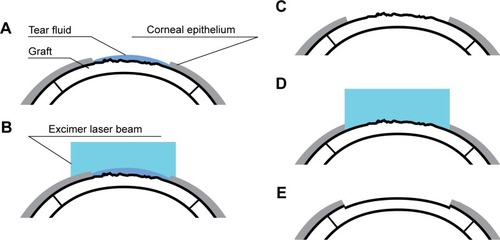Figures & data
Table 1 Demographic data and medical history
Figure 1 Steps of wet transepithelial phototherapeutic keratectomy (TE-PTK) in the management of persistent epithelial defects in the graft.

Figure 2 Graft surface prior to and following wet transepithelial phototherapeutic keratectomy for persistent epithelial defects in the graft in patient number 8.

Table 2 Changes in BCVA after phototherapeutic keratectomy, laser settings, and follow-up details
